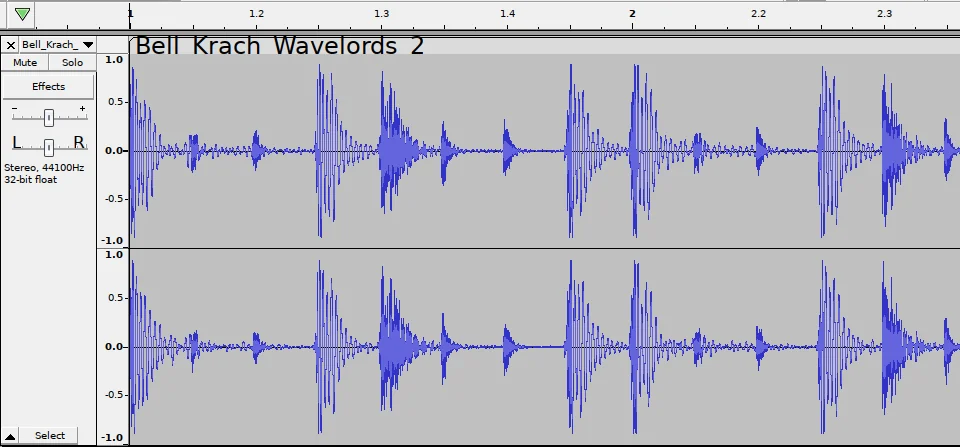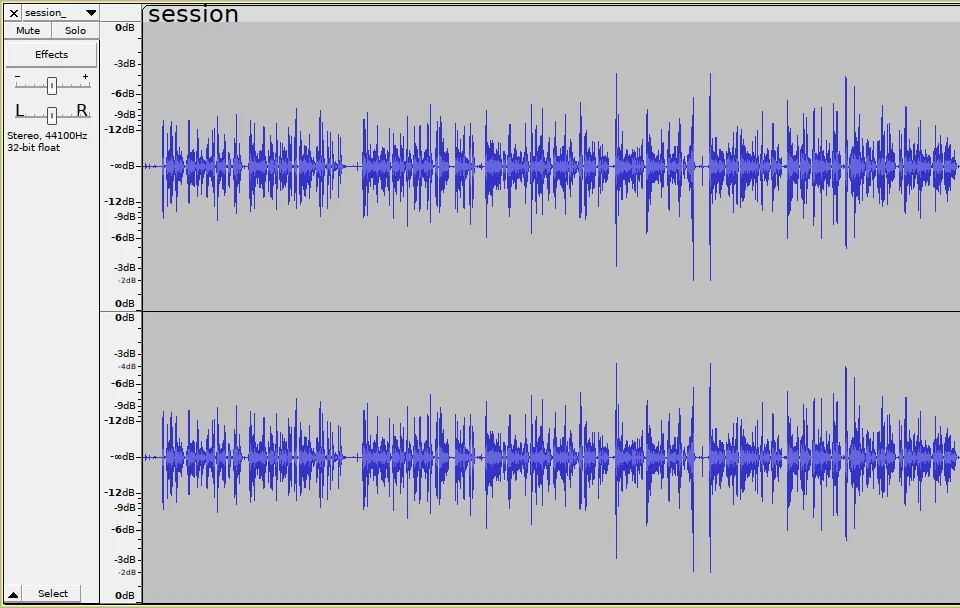The release notes for Audacity 3.3.0 say it’s “focused on under-the-hood changes”. It’s true, but there are some very useful and long-anticipated new features too.
Number one feature, in my opinion, is the newly added musical time ruler. Instead of minutes and seconds you get bars and beats (the toggle is in the right-click menu for the time ruler):

So now if you record music to Audacity and make quick mixes, things get vastly better. They get even better than that when you enable the newly added Tempo Time Signature toolbar and enable snapping to beats (the Snap toggle now has its own toolbar):

Yes, this means there is only a global BPM value possible in Audacity projects for now, but given that this new feature set is officially in beta, we might see tempo ramps at some point in the future.
Speaking of rulers, the new Linear (dB) vertical ruler (right-click for the toggle) goes from 0 dBFS to -∞ dBFS:

There’s more:
- More built-in effects are realtime-capable now: Bass & Treble, Distortion, Phaser, Reverb, and Wahwah.
- A new simplistic Shelf filter where you can set either low or a high shelf with a custom base frequence and amount (in dB).
- The Cut/Copy/Paste toolbar now has a Delete button that just nukes the current selection without going through the trouble of placing it into the clipboard first.
- FFmpeg 6 is now supported (more file formats to load).
The entire list of changes is here. Builds are available for Linux, Windows, and macOS.
What’s next? I’d have to check back with the team, but within this year, we’ll likely see more work on internals, more built-in effects ported to become realtime-capable, and more basic UX/UI fixes (no point investing a lot of time into something you’ll eventually replace). This is important work, because it makes Audacity more robust and easier to use.
Another larger project is the port to Qt. This is where the vast majority of UX/UI improvements are likely to happen. Work on the port started late last year. More recently, the team began working on QML-based implementation of very basic UI features such as the tools toolbar and the master volume control. There’s not much to see yet, it will probably be another year or two before we have a complete Qt/QML port of Audacity.
Patreon subscribers get early access to my posts. If you are feeling generous, you can also make a one-time donation on BuyMeACoffee.

